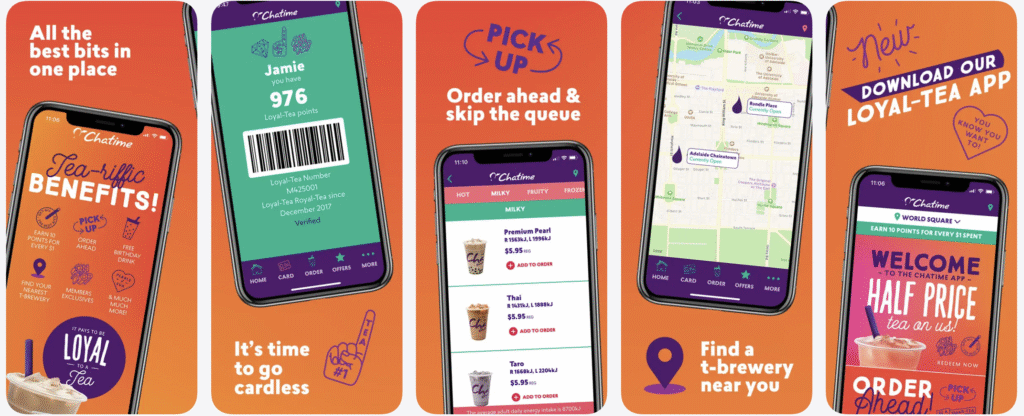Estimated Reading Time: 9 minutes

Ever earned a free latte at one outlet, only to be told it’s “not valid here”?
That’s the franchise equivalent of heartbreak and it’s one of the most common franchise loyalty program mistakes to avoid. Because when your multi-location rewards program for franchises isn’t connected, you don’t just lose points — you lose trust. And in a world where multi-franchise owners compete for repeat spend, trust is currency.
Building loyalty programs for franchise businesses means balancing consistency, operational realities, and customer expectations. Whether you run a multi-location food franchise with strong brand loyalty or a fast-growing retail chain, disjointed systems and siloed data can quickly frustrate your customers.
The strongest brands invest in connected systems — think multi-location POS (Point of Sale) loyalty solutions for franchise businesses that unify data and streamline customer loyalty management across every outlet.
In this guide, we’ll walk through the dos and don’ts of multi-location rewards, highlight best practices for maintaining loyalty across multiple verticals, and show how modern platforms make it easier to manage loyalty programs at scale.
Why Franchises Need Smarter Loyalty Programs
Let’s start with the big picture.
Franchises aren’t just collections of stores, they’re networks of trust.
Every outlet reflects the same brand promise, no matter who’s behind the counter. So when a loyalty program fails at one outlet, it doesn’t just hurt that store. It dents your entire brand perception. A customer doesn’t care which franchisee is responsible… they just remember your name.
According to Bain & Company, a 5% increase in customer retention can boost profits by up to 95%. That’s exponential for franchises because loyalty created at one outlet radiates to others.
The challenge?
Scaling consistency without losing simplicity. That’s why a unified loyalty program strategy for franchise chains matters more than ever. It’s not just a marketing perk, it’s the glue that holds your customer experience together.
The Do’s of Multi-Location Rewards Programs
- Centralize Your Loyalty System
Every great franchise brand loyalty and reward system starts with a single source of truth. That means a centralized backend where data, customer profiles, and rewards live harmoniously.
When each outlet runs its own system, customers end up with mismatched balances, duplicated accounts, and frustration levels that skyrocket.
Platforms like SimpleLoyalty solve this by keeping all outlets under one digital roof. A member who buys at outlet A should earn the same points as one in outlet B, located 20 minutes away. This way rewards become fluid and fair.
Bonus Tip
Centralization also means your marketing team can roll out promotions franchise-wide in minutes, not months. No more chasing 27 managers to approve a “Double Points Tuesday” campaign.
- Keep It Simple, Universal, and Rewarding
The golden rule of loyalty: if your customer needs to do the math, you’ve already lost them.
A multi-location rewards program for franchises works best when it’s intuitive. Think digital stamps, cashback systems, or easy tier-based models. Customers should feel rewarded, not calculate their rewards.
Take Chatime, for example. Their loyalty app allows members to earn and redeem seamlessly across outlets. No “selected store” fine print.

Your loyalty program should feel equally universal. No matter which outlet a customer visits, the earning and redemption flow should stay identical. Because in the customer’s eyes, your franchise is one brand (not a patchwork of operators).
- Empower Franchisees With the Right Tools
A loyalty program only works if your frontlines — your franchisees — are all-in.
Franchisees shouldn’t feel like loyalty programs are corporate burdens. They should see them as growth levers. Give them easy access to dashboards, campaign analytics, and customer data.
Create a clear franchisee loyalty program implementation guide:
- Explain the program structure.
- Outline their responsibilities.
- Show them how loyalty increases repeat purchases.
When they understand the why, they’ll naturally promote the what.
Pro Tip
Offer performance-based incentives. Reward franchisees whose customers show the highest redemption or retention rates. Gamify it! Loyalty shouldn’t just be for customers.
- Personalize Using Data
Modern loyalty is fueled by data, not guesswork.
Use purchase history, visit frequency, and location behavior to personalize offers. A customer who frequently buys matcha lattes in downtown New York might respond better to a “Buy 5, Get 1 Free” promo, while someone in Los Angeles could prefer instant cashback rewards.
This is where a strong franchise loyalty program measurement and success metrics framework shines.
Measure what matters:
- Redemption rate (Are customers actually using rewards?)
- Visit frequency (Are they returning faster?)
- Cross-location activity (Are they shopping across outlets?)
Tools like SimpleLoyalty simplify this with real-time analytics, helping franchisors and franchisees make smarter marketing decisions.
- Build Emotional Loyalty
Points and perks bring customers in. But emotional loyalty (the kind that makes people choose you over a competitor with the same reward value) keeps them coming back for years. It’s about connection, not just currency.
Starbucks sets the benchmark here. Its entire loyalty ecosystem runs through one seamless app. Every touchpoint feels intentional. Instead of forcing customers to jump through login screens or separate portals, Starbucks eliminates friction completely. That simplicity is what makes it addictive.

The brilliance lies in its subtle psychology. The one-star-per-dollar system isn’t random. It taps into the Endowed Progress Effect, where visible progress keeps users motivated to complete their next purchase. The app also remembers your usual order, preferred store, and personalized offers, making it feel like it truly “knows” you.
Franchise brands can mirror this emotional intelligence through design and experience. When every branch uses the same integrated loyalty system, customers feel recognized no matter where they go.
The Don’ts of Multi-Location Rewards Programs
- Don’t Run Isolated Loyalty Systems
If every franchise runs its own rewards app, you’re not running a loyalty program… you’re running chaos.
When systems don’t talk to each other, customers end up frustrated (“Why can’t I use my points here?”) and your brand looks disorganized.
Fragmented systems also make reporting impossible. Imagine trying to measure retention when each outlet uses a different definition of “active member”.
The solution?
One platform, one database, one experience.
- Don’t Overcomplicate Rewards
Too many tiers.
Too many terms.
Too many taps to redeem.
Sound familiar?
Customers don’t want to study your loyalty manual; they just want to feel rewarded. Programs like Nando’s or Tealive succeed because they’re clear: buy, earn, redeem, repeat.
Your loyalty program should fit into a sentence: “Earn 1 point per $1 spent; get $10 off every 100 points”. Easy to remember. Easy to sell.
Complication kills conversion, and confusion kills participation.
- Don’t Neglect Franchise Communication
Launching a loyalty program is exciting… but maintaining it requires discipline. Every outlet needs to stay aligned on current offers, active campaigns, and redemption rules.
When one branch says, “We don’t offer that anymore”, and another says, “We still do”, you’re telling customers your brand doesn’t talk to itself.
Hold monthly syncs, share updated visuals, and keep your training materials accessible. Internal consistency creates external credibility.
- Don’t Ignore the Customer Journey
Many franchise loyalty programs focus on rewards after purchase, but ignore what happens before and between visits.
Use your loyalty data to re-engage idle members. Send friendly nudges, exclusive coupons, or bonus points to re-activate dormant accounts.
Brands that treat loyalty like an ongoing conversation (not a one-time transaction) see higher long-term engagement.
- Don’t Forget Data Privacy
Collecting customer data is a privilege, not a right.
Make sure your loyalty program complies with global data privacy laws (GDPR, CCPA, or any regional equivalents). Tell customers exactly what you collect and how it’s used. Because one privacy scandal can undo years of brand trust faster than they can think of unsubscribing.
Best Practices for Loyalty Success
Unify Tech, Simplify Experience
Technology should simplify, not complicate. Choose loyalty solutions for franchises and multi-locations that integrate directly with your POS, CRM, or ordering app.
That means no double entries, no manual uploads, and no delays between purchase and point updates. Customers expect instant gratification, so deliver it.
Platforms like SimpleLoyalty automate the heavy lifting, ensuring your data, analytics, and engagement tools work seamlessly together.
Design for Mobility and Scalability
Your loyalty system should scale as you do. That means it should handle 10 stores or 1,000 with the same reliability. Cloud-based solutions make this easy, letting you expand without breaking the system or retraining every team from scratch.
Also, go mobile-first. Customers are more likely to check loyalty rewards on their phones than anywhere else. Ensure your app or web interface is smooth, fast, and frustration-free.
Align Corporate Vision and Local Flavor
Every franchise network lives in tension between global consistency and local adaptation.
Your loyalty program should reflect that balance. For instance, corporations might run a nationwide “Spend & Win” campaign, while franchisees can offer localized perks like “Free Dessert Fridays”.
A good loyalty program for franchises and multi-unit stores allows flexibility within a structured framework. Local relevance keeps customers engaged; central oversight keeps branding intact.
Promote Everywhere
One of the biggest franchise loyalty program mistakes is assuming “if we build it, they will join!”.
Nope.
Customers don’t automatically enroll unless you tell them why it matters.
Train your staff to promote the loyalty program at checkout. You can use QR codes on receipts, posters near POS counters, and social media reminders. The more visible your loyalty program is, the more it becomes part of your brand identity.
Remember: a loyalty program isn’t a “set and forget” project, it’s an ongoing campaign.
Leverage Data to Optimize Offers
Here’s where the magic happens.
Use your franchise loyalty program measurement and success metrics to learn and iterate. Track which promotions drive the most engagement. Spot trends like “redemptions rise on Tuesdays: or “urban stores outperform suburban ones in member sign-ups.
These insights let you adjust your loyalty program strategy for franchise chains in real time, rewarding what works and re-engineering what doesn’t.
Data is your compass; let it guide your next promotion, not just justify your last one.
Case in Point: The Power of Consistency
Let’s look at a real-world parallel.
McDonald’s Malaysia runs one of the most consistent multi-location loyalty programs in the country. Its McDelivery app syncs rewards, coupons, and redemptions seamlessly across outlets. Whether you’re in Penang or Kuala Lumpur, the experience feels identical.
That’s not a coincidence, it’s a strategy. Every franchise location uses the same backend, unified promotions, and coordinated rollouts.
Contrast that with smaller franchises that operate independently, where customers face different rules at different outlets.
The difference?
One feels like a brand. The other feels like confusion.
The Future of Multi-Location Loyalty
The future of franchise loyalty lies at the intersection of data, personalization, and automation.
AI-driven loyalty engines are now predicting what customers want before they even realize it. Imagine rewarding a customer for visiting during off-peak hours or sending an automated “welcome back” offer when they return after 30 days.
These innovations make loyalty less about transactions and more about relationships.
For multi-location brands, this means loyalty systems that learn, adapt, and evolve with every purchase.
Conclusion
A successful franchise loyalty program isn’t about fancy apps or flashy rewards. It’s about creating a seamless, familiar experience wherever your customers go.
From centralized systems to personalized campaigns, the magic lies in unifying technology, data, and human connection. Platforms like SimpleLoyalty help franchises achieve that balance — delivering one brand experience, one data view, and one customer journey across every location.
Because at the end of the day, loyalty isn’t built by discounts.
It’s built by trust, consistency, and belonging.
One perfectly synced reward at a time.

